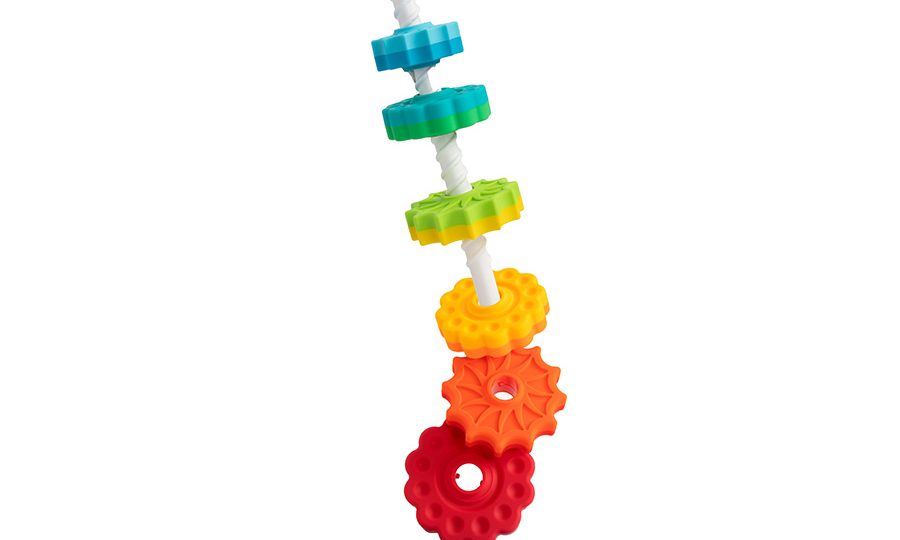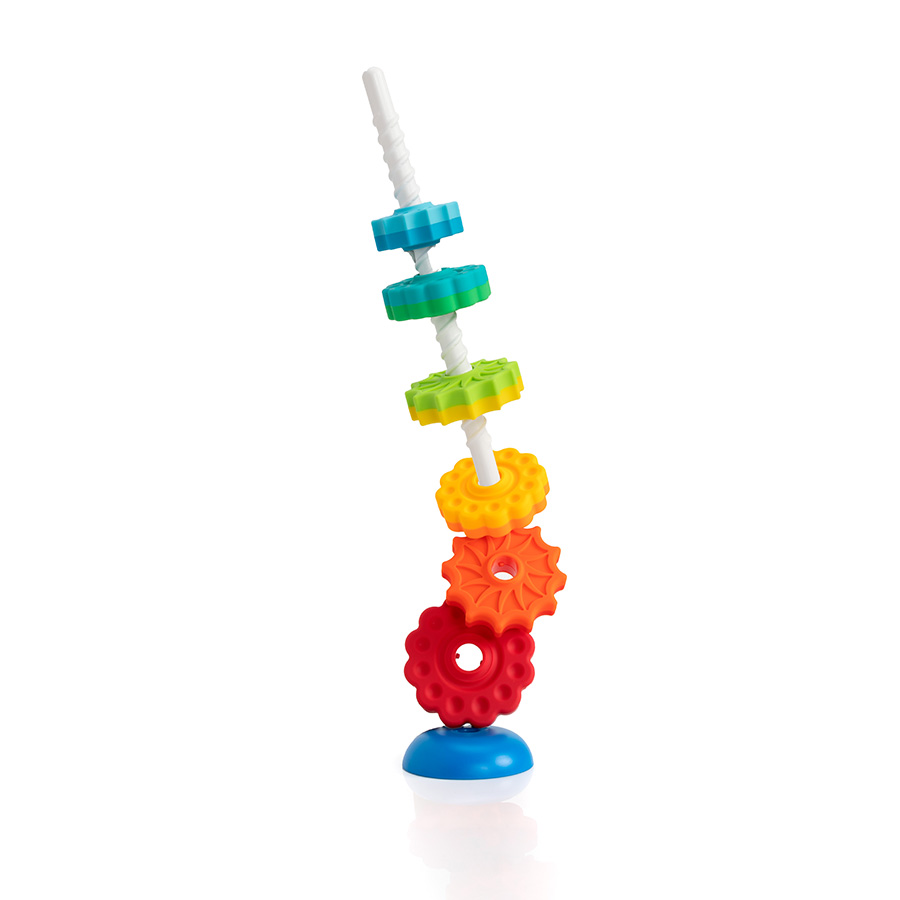
Engaging Toddlers: The Joy of the Spiral Stacking Toy
The Developmental Benefits of Spiral Stacking Toys
Spiral stacking toy is more than just fun playthings. They serve as vital tools for developmental progress in toddlers. These toys can stimulate a child’s brain in several ways.
Cognitive Skill Enhancement
When toddlers play with a spiral stacking toy, they learn about size and sequence. This kind of play boosts their cognitive ability. It challenges them to think about which piece fits where, sharpening their problem-solving skills.
Fine Motor Development
These toys require the use of small muscles in the hands and fingers. Picking up, grasping, and placing each piece strengthens these muscles. It improves their dexterity and hand-eye coordination.
Sensory Stimulation
Spiral stacking toys come in various textures and materials. They can be soft, smooth, or even rough. Touching and feeling these different textures enhances a toddler’s sensory experience.
Language Skills
As toddlers play, they often talk about what they’re doing. They might say things like “big ring” or “small ring”. This sort of playtime chat helps develop their language skills.
Emotional and Social Growth
Playing with spiral stacking toys often involves taking turns and sharing. These actions are fundamental for social and emotional development. Toddlers learn patience and how to interact with others.
Concentration and Patience
Working with a spiral stacking toy can take time and effort. It teaches toddlers to focus and be patient as they work toward their goal.
Incorporating a spiral stacking toy into a toddler’s playtime offers a world of developmental benefits. It’s not just play; it’s a building block for their future learning and growth.
Choosing the Right Spiral Stacking Toy for Your Toddler
Choosing the right spiral stacking toy for your child is crucial. Here’s what to consider:
Age Appropriateness
Check the recommended age range on the toy. Ensure it matches your toddler’s age group. Toys too advanced might frustrate them, too simple might bore them.
Material Quality
Pick toys made from durable, non-toxic materials. This ensures safety and longevity. Wooden and BPA-free plastic toys are popular choices.
Ease of Use
Select toys with parts that are easy for little hands to hold and place. This encourages play and learning without causing unnecessary difficulty.
Educational Value
Choose a spiral stacking toy that offers learning opportunities. Look for toys that come with numbers, letters, or shapes to enrich educational play.
Engaging Design
Opt for toys with bright colors and intriguing designs. These features attract toddlers and keep them engaged for longer periods of time.
Growth Potential
Consider toys that will grow with your child. Adjustable difficulty levels or additional pieces can extend the toy’s relevance as your toddler advances.
Keep these points in mind to find a spiral stacking toy that will delight and educate your toddler. Proper selection can contribute greatly to their developmental journey.
Incorporating Spiral Stacking Toys into Playtime
Incorporating a spiral stacking toy into your toddler’s daily routine can enhance their play and learning experiences. Here are some practical tips to integrate these versatile toys into playtime effectively:
Make It a Routine
Establish a regular playtime with the spiral stacking toy. It could be after meal times or in the morning. Consistency helps toddlers anticipate this enjoyable activity.
Play Together
Sit with your child and show them how to play. Interact with the toy and your toddler. This encourages bonding and helps them learn from you.
Narrate the Play
As your toddler stacks, name the pieces or colors. ‘You picked the blue ring!’ This boosts their language skills as they associate words with actions.
Praise Efforts
Acknowledge their success, even if they don’t stack the pieces correctly. ‘Great job trying!’ Positive reinforcement motivates them to keep trying and learning.
Create Challenges
Once they grasp the basics, challenge them. Ask, ‘Can you find the smallest ring?’ This keeps them engaged and furthers cognitive development.
Encourage Independence
As they grow more confident, step back. Let your toddler explore and play independently. This fosters creativity and decision-making skills.
Incorporating a spiral stacking toy into playtime is simple yet impactful. Through consistent, interactive, and independent play, your child can reap the developmental benefits of this engaging toy.
Safety Considerations for Spiral Stacking Toys
While spiral stacking toys are invaluable for development, safety should always come first. Here are key safety aspects to keep in mind:
Materials and Construction
Check the materials of the toy for any harmful substances. Avoid toys with small, detachable parts that could pose a choking hazard for young children. The construction should be solid with no sharp edges or points.
Stability and Weight
The base of the toy should be stable to prevent tipping over, which is important for preventing injuries. Also, the toy should not be too heavy, eliminating the risk of a dropped toy causing harm.
Paint and Coatings
If the toy is painted, ensure the paint is non-toxic and lead-free. Coatings should be durable and not peel or chip easily, as toddlers may put pieces in their mouths.
Age-Grade Safety Standards
Follow age-grade safety standards strictly. A toy that is intended for older children might not be safe for a toddler.
Regular Inspection
Regularly inspect the toy for any signs of damage or wear. Broken pieces should be repaired or the toy should be discarded to keep playtime safe.
By careful selection and regular inspection, the spiral stacking toy you choose for your toddler will not only be a source of learning and joy but also a safe option for their playtime.
Enhancing Motor Skills with Spiral Stacking Toys
Spiral stacking toys are essential for honing motor skills in toddlers. They facilitate a multitude of movements that are crucial for the development of fine motor skills. Let’s delve into the ways these toys boost motor skills and why they are an invaluable addition to any toddler’s playtime.
Developing Fine Motor Skills
Spiral stacking toys involve gestures such as pinching, grasping, and releasing. These actions encourage toddlers to use their thumb and fingers, enhancing their pincer grip. Manipulating the toy pieces teaches toddlers to control their hand movements, which is essential for tasks like writing.
Improving Hand-Eye Coordination
Aligning the toy’s rings onto the spiral requires keen observation and precise hand movements. Toddlers learn to coordinate their vision with their hand movements, which is fundamental in all sorts of daily activities.
Encouraging Bilateral Coordination
Often, playing with these toys involves using both hands. One hand may stabilize the base while the other stacks the rings. This bilateral coordination is crucial for skills like typing, tying shoelaces, or cutting with scissors.
Strengthening Muscle Groups
The repeated action of stacking encourages the use of various muscle groups in the arms and hands. These muscles grow stronger with each play session, supporting a range of more complex physical activities as toddlers grow.
In conclusion, spiral stacking toys play a pivotal role in enhancing toddlers’ motor skills. Including these toys in your child’s routine fosters vital developmental progress. Such simple toys lay the foundation for more intricate skills they will learn later in life.
The Role of Colors and Shapes in Spiral Stacking Toys
The colors and shapes in spiral stacking toys are not just for looks. They play a crucial role in the developmental journey of toddlers. These aspects of the toys contribute to cognitive and sensory development in several ways.
Impact of Colors on Learning and Development
Bright, contrasting colors in spiral stacking toys grab a toddler’s attention. They help with color recognition and can boost memory retention. As children describe the colors they see, they build their vocabulary too. Certain colors can also influence mood and stimulate creativity during play.
Shapes and Cognitive Development
Shapes are a fundamental part of learning with spiral stacking toys. Recognizing and differentiating various shapes aids in developing spatial awareness. It helps toddlers understand and organize the world around them. Playing with different shapes also lays the groundwork for math skills like geometry in the future.
Enhancing Problem-solving Skills
Each piece in a spiral stacking toy must fit in a specific order. This teaches toddlers about size and shape correlation. As they figure out where each piece goes, they hone their problem-solving abilities. It challenges them and encourages logical thinking.
Sensory and Tactile Engagement
Shapes with different edges and textures stimulate the senses. Smooth, round edges can provide comfort, while more complex shapes can intrigue and engage a child’s touch. This tactile stimulation is key for sensory processing development.
Incorporating a variety of colors and shapes in spiral stacking toys is an effective way to support a toddler’s growth. Through play, these toys can foster an enriching learning environment. They help children make sense of complex concepts in an uncomplicated manner. Choose toys that are vibrant and diverse in shape to maximize the developmental benefits for your little one.
Creative Ways to Use Spiral Stacking Toys in Learning Activities
Spiral stacking toys are not just for stacking; they can be educational tools as well. Transform playtime into learning time with these creative activities:
Sorting and Categorizing
Encourage your toddler to sort pieces by color, size, or shape. This teaches them how to categorize and organize items, a key math skill.
Counting Practice
Use the rings to practice counting. Ask your child to count each piece as they stack. This reinforces number recognition and arithmetic basics.
Storytelling and Imagination
Each piece of the toy can represent a character or element in a story. Ask your child to create tales as they play, sparking their imagination and narrative skills.
Sequencing and Patterns
Line up the pieces to create sequences and patterns. This activity develops their ability to predict and follow sequences, which is vital for logical thought.
Memory Games
Place the pieces in order and then hide them. Ask your child to recreate the sequence from memory. This enhances their memory and recall abilities.
Letter and Number Matching
If the toy includes pieces with letters or numbers, match them with corresponding cards. This assists with letter recognition and phonetic sounds, essential for reading.
By using spiral stacking toys in these diverse ways, you can turn playtime into an engaging and educational experience for your toddler. Keep sessions fun and light, allowing your child to learn at their own pace.
Comparing Different Types of Spiral Stacking Toys
When shopping for a spiral stacking toy, you’ll notice a diverse range in the market. Each type offers unique benefits and can cater to different stages of your toddler’s growth. Here’s a look at some common types of spiral stacking toys and what sets them apart:
Wooden Spiral Stacking Toys
Wooden toys are classic and durable. They’re often crafted from high-quality, sustainable materials. Their solid feel and natural textures appeal to parents seeking eco-friendly options. However, they may be heavier, making them suitable for slightly older toddlers who can handle the weight safely.
Plastic Spiral Stacking Toys
Plastic toys are lightweight and colorful. They come in a variety of shapes and can include features like lights or sounds. Most are easy to clean and transport. Make sure the plastic is BPA-free for your toddler’s safety.
Magnetic Spiral Stacking Toys
Magnetic toys add an exciting twist to stacking with pieces that snap together. This feature can fascinate toddlers, making the play more engaging. But, it’s important to ensure the magnets are securely embedded to prevent any swallowing risks.
Textured Spiral Stacking Toys
Toys with various textures and materials stimulate touch senses. They may combine soft fabrics, smooth plastics, and bumpy surfaces. Textured toys are excellent for sensory development but require monitoring to prevent toddlers from biting off pieces.
Each type of spiral stacking toy enhances playtime differently. Consider your child’s age, interests, and developmental needs when choosing. Always opt for high-quality, safe toys that can withstand the enthusiasm of a curious toddler.


